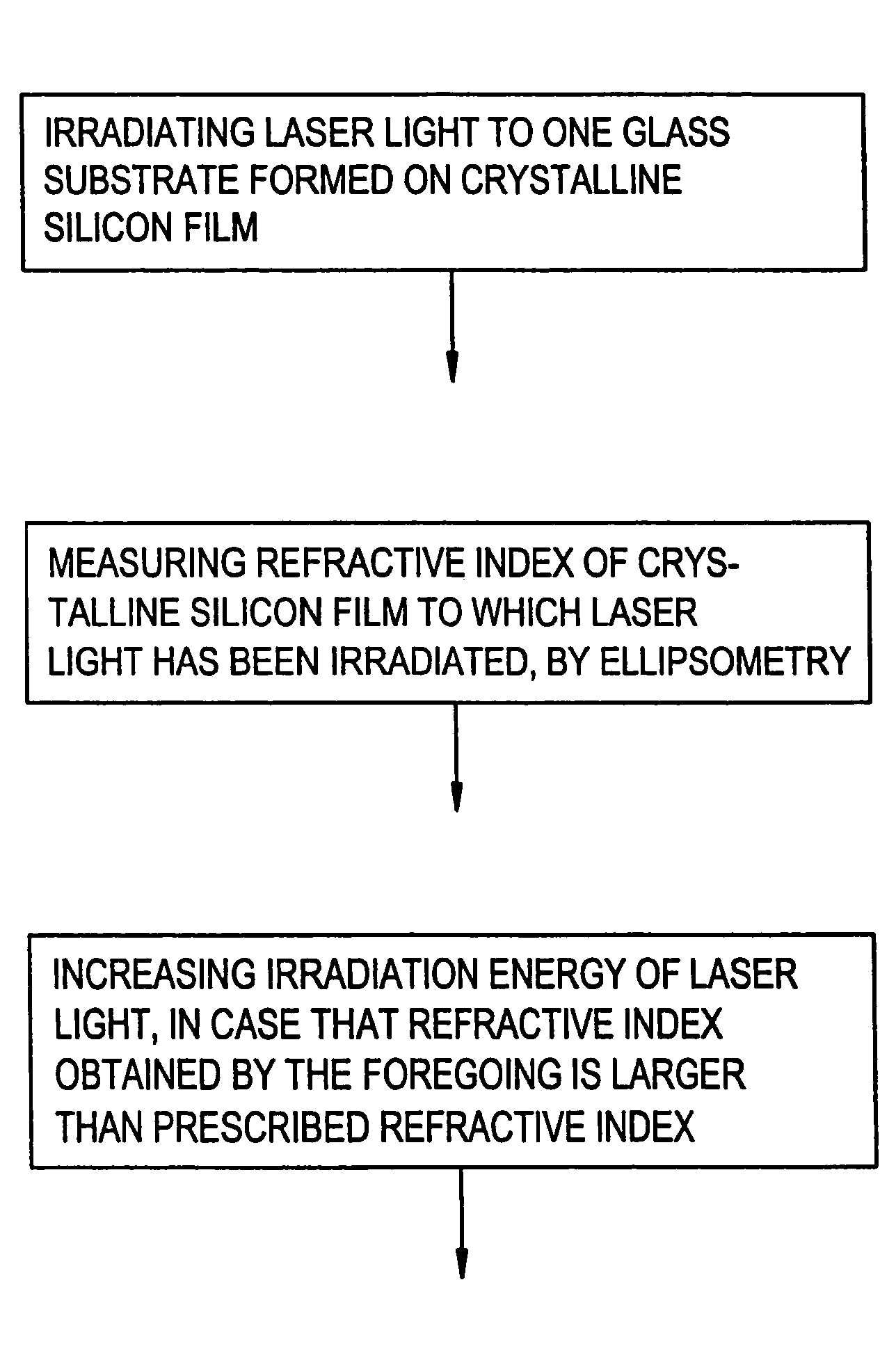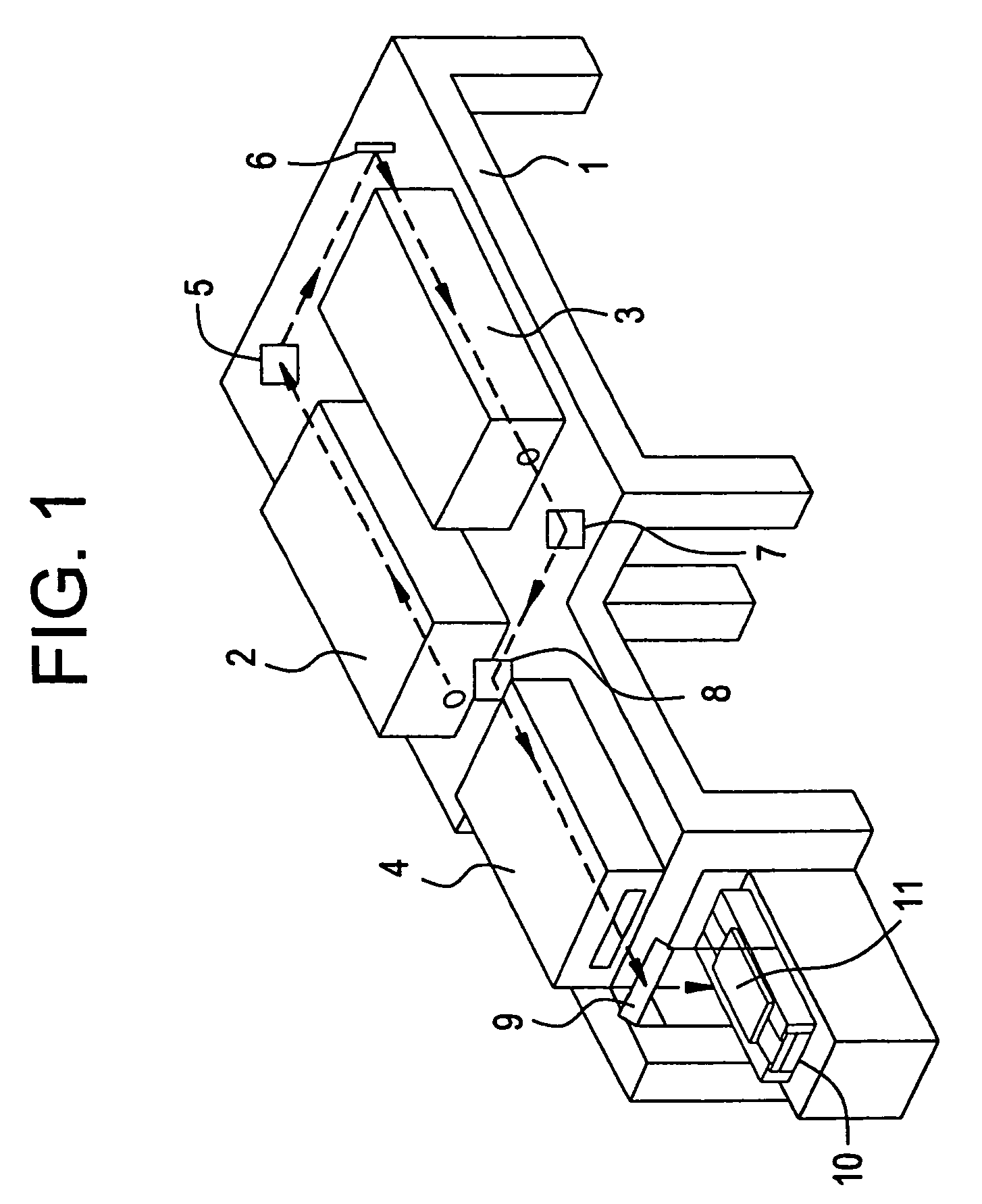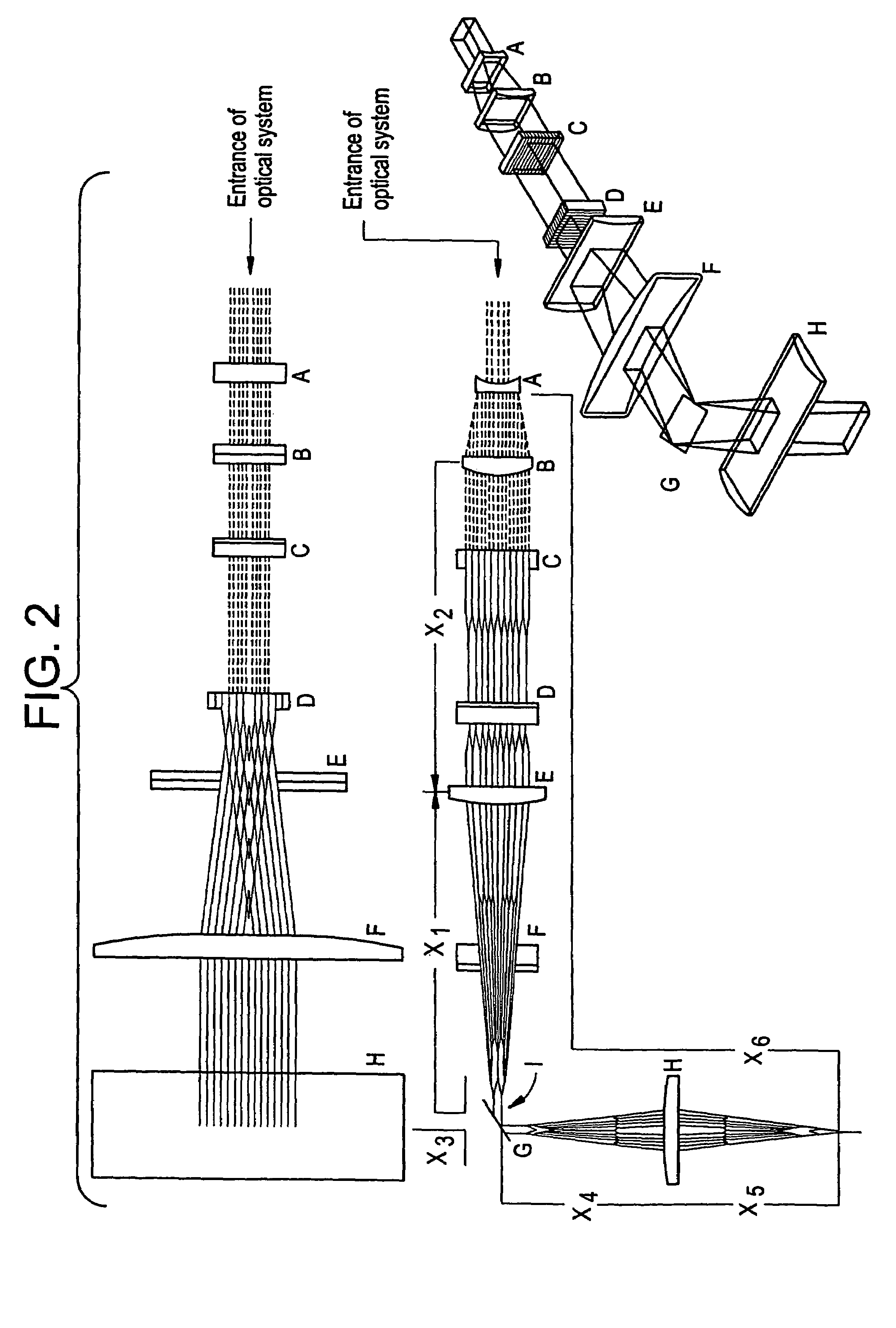Optical processing apparatus and optical processing method
- Summary
- Abstract
- Description
- Claims
- Application Information
AI Technical Summary
Benefits of technology
Problems solved by technology
Method used
Image
Examples
embodiment 1
[0060]This embodiment is directed to a system and a method of evaluating states (which are defined as a concept including the crystallinity and the flatness of a film) of a silicon film that has been crystallized by illumination with excimer laser light.
[0061]First, a description will be made of an apparatus. FIG. 1 is a conceptual diagram of a laser annealing apparatus used in this embodiment. KrF excimer laser light (wavelength: 248 nm; pulse width: 25 ns) is emitted from an oscillator 2. Apparently other excimer lasers and lasers of other types can also be used.
[0062]Laser light emitted from the oscillator 2 are passed through full-reflection mirrors 5 and 6, amplified by an amplifier 3, and introduced into an optics 4 via full-reflection mirrors 7 and 8. The laser beam, which has a rectangular shape of about 3×2 cm2 before entering the optics 4, is shaped by the optics 4 into a long and narrow beam (linear beam) of 10–30 cm in length and 0.1–1 cm in width. The laser light as out...
embodiment 2
[0083]This embodiment is directed to formation of a thin-film transistor by use of the technique of the first embodiment. FIGS. 5(A)–5(D) show manufacturing steps of a thin-film transistor. In this embodiment, a glass substrate 501 is used as the substrate. A 2,000-Å-thick silicon dioxide film (not shown) is formed, as an undercoat film, on the surface of the glass substrate 501.
[0084]First, a 500-Å-thick amorphous silicon film 502 is formed on the glass substrate 501 by plasma CVD or low-pressure thermal CVD. Ultraviolet light is then applied to the surface of the amorphous silicon film 502 in an oxygen atmosphere. After the surface is cleaned, a very thin oxide film is formed on the cleaned surface. A solution of nickel acetate is applied to form a liquid film 503, and then spin-coated with a spinner 500 (see FIG. 5(A)).
[0085]Next, the substrate is subjected to a heat treatment of 450° C. for one hour in an inert gas atmosphere to remove hydrogen from the amorphous silicon film 50...
embodiment 3
[0096]This embodiment is directed to a technique of correcting the laser light illumination conditions on a realtime basis. The data of FIG. 4 represent a relationship between refractive indices (as measured by the ellipsometry) of crystalline silicon films whose crystallinity has been improved by illumination with KrF excimer laser light and illumination energy densities (mJ / cm2) of laser light used. As mentioned above, the illumination energy densities of FIG. 4 do not represent actual energy densities of laser light used.
[0097]However, it is understood that the refractive index of a crystallinity-improved crystalline silicon film and the energy density of illumination laser light has a relative relationship that is proportional as shown in FIG. 4. Therefore, by constantly controlling the laser light illumination energy so as to provide a predetermined refractive index, a constant illumination energy density value can always be obtained.
[0098]Therefore, where it is necessary to pe...
PUM
 Login to View More
Login to View More Abstract
Description
Claims
Application Information
 Login to View More
Login to View More - R&D
- Intellectual Property
- Life Sciences
- Materials
- Tech Scout
- Unparalleled Data Quality
- Higher Quality Content
- 60% Fewer Hallucinations
Browse by: Latest US Patents, China's latest patents, Technical Efficacy Thesaurus, Application Domain, Technology Topic, Popular Technical Reports.
© 2025 PatSnap. All rights reserved.Legal|Privacy policy|Modern Slavery Act Transparency Statement|Sitemap|About US| Contact US: help@patsnap.com



